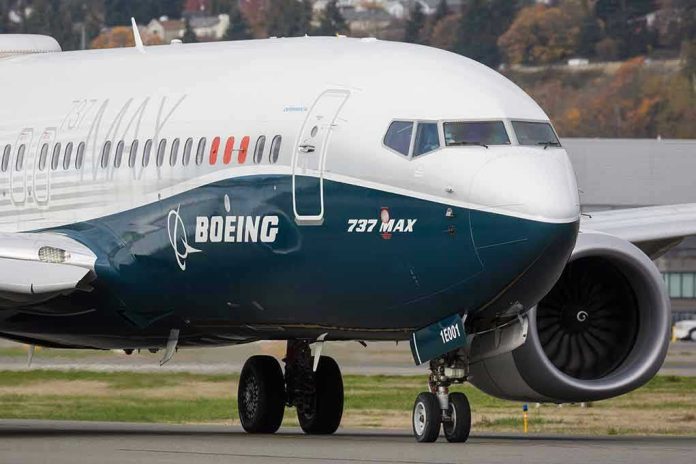
As Boeing workers reject yet another contract offer, the implications for labor relations in the aerospace industry remain profound.
Story Snapshot
- The largest Boeing strike since 2008 involves over 33,000 workers.
- The strike, centered on wage and retirement security, halted key aircraft production.
- Union demands led to a new contract with a 38% wage increase over four years.
- Significant economic impact with estimated losses of $5 billion by early October.
The Unfolding Strike and Its Origins
On September 13, 2024, more than 33,000 Boeing machinists initiated a strike after rejecting the company’s contract offer by a staggering 94.6%. This marked the largest labor action at Boeing since 2008, with demands focusing on higher wages and better retirement benefits. The strike came as a culmination of long-term dissatisfaction over stagnant wages, benefit reductions, and perceived erosion of job security, issues that have plagued the company’s workforce since Boeing shifted from defined benefit pensions to 401(k)-style plans in 2014.
Negotiations between Boeing and the International Association of Machinists and Aerospace Workers (IAM) broke down by October 8, 2024. Boeing’s response included filing an unfair labor practice charge against the union and announcing layoffs affecting thousands by October 14. Despite multiple offers and a significant halt in production, it was only on November 4 that union members approved a contract, ending the strike.
Economic and Industry Impacts
The financial ramifications of the strike were profound, with Boeing suffering an estimated $5 billion in losses by early October. The strike’s resolution saw a new contract offering a 38% wage increase over four years along with ratification bonuses. This outcome not only highlighted the power of organized labor but also underscored the growing trend of labor activism across the United States, particularly in industries where worker benefits have been systematically eroded.
Such a contract could potentially set a precedent for future labor negotiations within the aerospace sector, as well as other manufacturing industries. The increased focus on wage growth and retirement security may inspire similar actions, emphasizing the need for companies to address employee concerns proactively to avoid disruptive strikes.
Stakeholders and Future Considerations
The strike involved key stakeholders like IAM, led by District 751 President Jon Holden, and Boeing’s executive leadership, including Commercial Airplanes President and CEO Stephanie Pope. While IAM sought significant wage increases and the restoration of pension benefits, Boeing aimed to control labor costs and maintain competitiveness. The power dynamics between these groups significantly influenced the negotiation process and outcome.
Moving forward, Boeing’s challenge will be to restore production efficiently while mending relations with its workforce. The strike highlighted the delicate balance between labor cost management and maintaining a satisfied workforce, a challenge that will continue to shape Boeing’s strategy in the coming years.
Sources:
2024 Boeing machinists’ strike
Charted History: Boeing Labor Strikes
The Boeing Strike: 4 Moments the Company Fractured Its Bond with Workers
Boeing Strike: A Turning Point for Worker Rights














